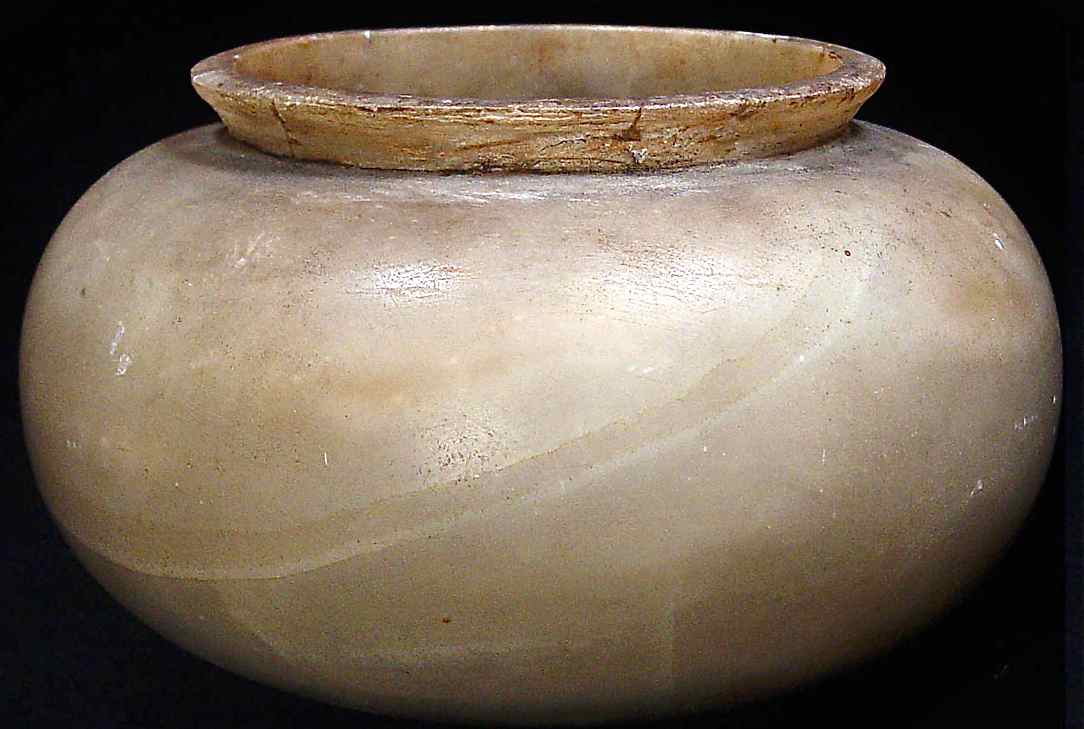

Title: Two Rare Egyptian Alabaster 3rd Dynasty Bowls
Shipping: $150.00
Artist: N/A
Period: Unassigned
History: N/A
Origin: N/A
Condition: Museum Quality
Item Date: 2683-2613 BC
Item ID: 5260
EGYPTIAN OLD KINGDOM ALABASTER BOWL WITH LATER CARTOUCHE. 3rd Dynasty, c. 2683-2613 BC. Provenance: McGregor Collection. Old tag on bottom gives find spot. Minor repair to rim, stable age lines at bottom. 5 x 8 inches. Very rare. A similar alabaster bowl without the rim can be found in the collection of the Field Museum of Chicago.
Link: http://en.wikipedia.org/wiki/Third_Dynasty_of_Egypt
The Third Dynasty of ancient Egypt is the first dynasty of the Old Kingdom. Other dynasties of the Old Kingdom include the Fourth, Fifth and Sixth. The capital during the period of the Old Kingdom was at Memphis.
After the turbulent last years of the Second Dynasty which may have included civil war, Egypt came under the rule of Djoser and this marks the beginning of the Third Dynasty. Both the Turin King List and the Abydos King List record five kings, while the Saqqara Tablet only records four.
• The Turin King List gives: Nebka, Djoser, Djoserti, Hudjefa and Huni
• The Abydos King List gives: Nebka, Djoser, Teti, Sedjes, and Neferkare
• The Saqqara Tablet gives: Djoser, Djoserteti, Nebkare and Huni
The archaeological evidence shows that Khasekhemwy, the last ruler of the Second Dynasty, was succeeded by Djoser, who is usually attested by his Horus name Netjeriket. Djoser’s successor was Sekhemkhet who had the nebty name Djeserty. The last king of the dynasty is Huni. There are three remaining Horus names of known 3rd dynasty kings: Sanakht, Kaba and Qahedjet. One of these three went by the nebty name Nebka.
Dating the Third Dynasty is similarly challenging. Shaw gives the dates as being approximately from 2686 to 2613 BC. The Turin King List suggests a total of 75 years for the third dynasty. Baines and Malek have placed the third dynasty as spanning the years 2650 – 2575 BC, while Dodson and Hilton date the dynasty to 2584 – 2520 BC. It is not uncommon for these estimates to be off by more than a century.